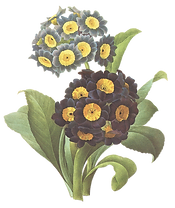Get in the Zone
- Cynthia Thomas
- Jan 10, 2017
- 3 min read
Determining which plants will thrive in your yard should be as easy as finding your zone on the ‘paint-by-numbers’ USDA Plant Hardiness chart. You’ve probably seen the map on the back of seed packets. The color-coded diagram breaks down plant hardiness based on average temperatures, divided into 5 degree Fahrenheit slices.
Alaska starts at 1 – Florida goes to 10.
You would think I could remember Virginia is 7.

Basically what this means is that different plants prefer different climates and while I may be able to get an exotic plant to live in my yard for a season, it most likely won’t come back.
Of course, one plant also may have different varieties that have been adapted for different conditions, so it’s always important to check the grower's recommendations and know your zone. And if that's not enough, soil and plant placement also figure into the “climate” of a plant. A winter blooming Camellia bush prefers a nice southern facing, protected spot to be its showiest in February.
So knowing your 'zone' is really just the start of successful gardening.
But we all have to start somewhere. And that is why a few years back, I marked one of those maps on the back of the packet and tucked it in my wallet. I got tired of asking the nursery employees if this plant or that would do well in my yard. (They are in the sales business, don’t forget ;)
Just about the time I committed this information to memory, the United States Department of Agriculture updated the chart in 2012. With more sophisticated weather data, many regions were broken into categories. Now, Northern Virginia is considered 7A (which is different even from the eastern counties to the mountainous Loudoun county).
The more I learn about the conditions that best suit a plant, it reminds me that differences are part of every landscape - not just geographically but fundamentally.
Raising our family in the military, we had to learn to adapt to the different places the Army sent us. Wherever we went, though, we knew we were in our 'zone.' There was enough familiarity through our military connection that we could branch out from a stable place. It took awhile, but we would eventually thrive.
A plant can’t do that. It will most likely die if the winter's are too cold or the summer's too hot.
Even some people find it hard to adjust to a new zone. I’ve seen this firsthand with my mother-in-law. As we brought her back from the hospital and rehab center, what is most important to her is to have things in their familiar spots. It’s her zone. And while it seems unimportant to me, to her it’s the difference between surviving and thriving.
What about you? What constitutes your zone? Is the climate around you more important or the climate inside you?
In this new season of life I am learning as Paul says in Philippians, “in whatever state I am, to be content.” (I write this from the basement of my mother-in-law’s house). Can I be happy in a dark and depressing spot? Me, who thrives on the beach, in the sunshine, in the freedom of the outdoors?
Paul goes on to write (paraphrasing here): I have learned the secret of having things the way I want them and doing without… “I can do all things through Christ who strengthens me.” (Philippians 4:13)
The power and strength of Jesus Christ - that is the zone you and I can take with us wherever we find ourselves. Of course there will be climates and situations we prefer, but just like a military family, the children of God are called to be ambassadors to the very ends of the earth.
It's time to remember what zone we're in!
To see the USDA site which has a great interactive map, click here. For more detailed info, simply click on your state or enter your zipcode and it will pull up an in-depth map. There are certain areas that have micro-climates, like Niagara Falls. It is zone 7, but the surrounding area is 5.























Comments